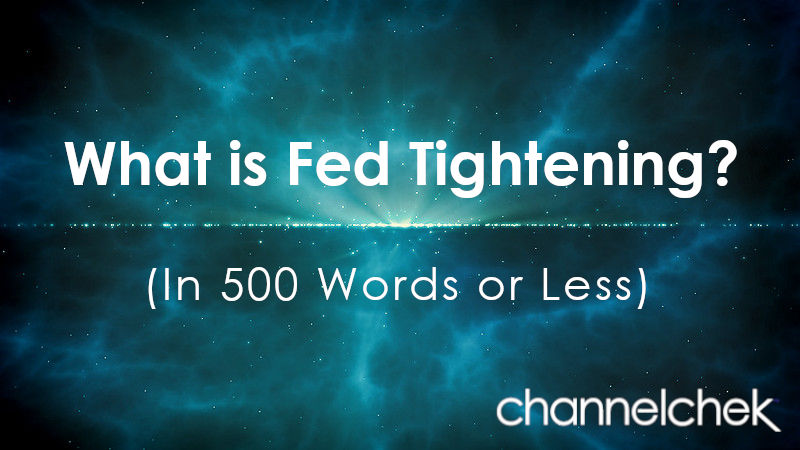What it Means When the Federal Reserve Bank Tightens Monetary Policy
When the US Federal Reserve expects that the economy is growing at a pace that may cause inflation above its target, it will try to slow the pace of growth, perhaps even cause a contraction of growth.
Tightening or tighter Fed monetary policy sometimes referred to as “taking the punch bowl away,” is implemented by the Fed by its own transactions in the bond market. The most common form of tightening involves the Fed selling bonds. These are secondary issues they purchased when “easing.”
Selling bonds takes money out of the hands of businesses and individuals and increases the float of bonds. This drives up rates as there is less money in the economy and more bonds competing for it – money is tighter across the economy.
Interest rates rise as a result of fewer dollars/more bonds money in the system, so the price of it (interest rates) increases. Increased rates, or more expensive money, causes fewer transactions. The decrease in transactions has a reverse snowball effect that shrinks growth.
The main interest rate that the Federal Reserve tries to impact has historically been the overnight rate that banks use to lend to each other to satisfy imbalances through the banking system at the end of the day. This overnight rate called the Fed Funds rate impacts rates (yields) in longer maturities. So While the Fed may tighten by 0.25% or 25 basis points, for overnight loans, this increase can impact longer maturities in the same direction, but not necessarily the same magnitude.
How this Works
The impact of fewer dollars chasing the same goods with a higher cost to borrow is lower economic activity. An example from just one segment of the market is housing: , if mortgage rates rise, fewer homes are sold, fewer homes cause fewer people decorating or renovating, fewer purchases equates to fewer needs for businesses to hire to manufacture, ship or sell goods. Lower employment needs create less stress on the wage component of inflation. There is also less stress on manufacturing inputs like materials. Shipping experiences reduced demand and may adopt more competitive pricing.
Overall the above chain reaction occurs in most industries as money becomes tighter and therefore more valuable. More valuable dollars is the opposite of inflation which reduces the dollars ability to purchase goods or services.
When Would a Central Bank Use Tight Monetary Policy?
The Fed has two primary goals when it comes to U.S. monetary policy: maximum employment and price stability.
When it comes to price stability, the long-run goal for average inflation is stated as 2%. When the outlook for average inflation is higher than 2%, the Federal Reserve will look to enact tight monetary policy. When inflation is persistently higher, the Fed will balance a tighter policy for the purpose of price stability with maximum employment.
Stay up to date. Follow us:

|

